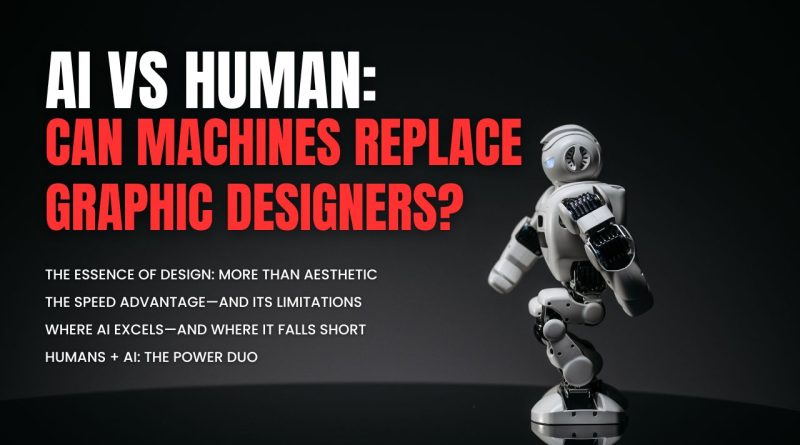AI vs Human: Can Machines Replace Graphic Designers?
In a technology-driven world, artificial intelligence has gradually etched its niche in areas previously believed to be uniquely human—art, writing, music, and graphics. With software that can produce logos in seconds, create layouts with surgeon-like accuracy, and even study visual patterns across space and time, AI appears to pose a threat to the position of the human designer. But does this imply machines are ready to execute everything on their own?
The brief response would be ‘not exactly,’ but a deeper explanation reveals much more.
The Essence of Design: More Than Aesthetic
Graphic design, at its core, is about communication. It’s not just about making things visually appealing—it’s about telling stories, evoking emotions, and forging connections. A poster can inspire, a logo can symbolize decades of values, and a website’s layout can influence how someone feels about a brand within seconds.
AI can definitely mimic styles and produce visual content at an astonishing speed, but it lacks emotional expression. It doesn’t get irony, sarcasm, wistfulness, or the thrill of an inside joke buried in a brand’s visual identity. A machine can learn from previous data to recommend what would work. A human, however, can do something no algorithm could have conceived—because humans make things for people.
The Speed Advantage—and Its Limitations
Give credit where credit is due: AI is quick. While a human designer might spend a few hours roughing out logo ideas, an AI tool could crank out dozens in minutes. That level of speed can be particularly useful at earlier ideation phases or in bulk production processes such as resizing assets for many formats.
Speed is not always quality, however. Design is usually a trial-and-error process. The greatest ideas are not the initial ones. They’re a product of experimentation, errors, middle-of-the-night reckonings, and crazy “what-if” questions that no computer would ever consider asking. AI can mimic creativity, but it isn’t going to pursue a hunch or try something insane—because it can’t. It isn’t interested in whether something is interesting. It can only say whether something will probably work based on an example.
Where AI Excels—and Where It Falls Short
AI is great at identifying trends and making decisions from large sets of data. It can go through millions of instances of website headers or package designs and pick up on trends quicker than a human ever could. It can even create designs that “blend in” with today’s visual style. But that also makes it a prisoner to what’s already been created.
Innovation demands going beyond what’s familiar.
That is something that AI is not able to do by itself. It requires a human to deliberately violate the rules, to go against trends, and to produce something new and surprising. The most iconic designs ever created—from the Nike swoosh to the Apple logo—were not products of statistical reasoning. They were the product of human imagination, intuition, and risk-taking.
Humans + AI: The Power Duo
So, are graphic designers being replaced by machines? No. But they are transforming the terrain fast. The future of design lies in creatives who can collaborate with AI, not be displaced by it. It’s not man versus machine. It’s about synergy.
A designer with AI at their disposal is like an artist having unlimited brushes and colors. The difference is knowing how to utilize them.
conclusion
AI can perhaps produce beautiful visuals, but it cannot really create like humans. It does not laugh, weep, dream, or defy. It does not doodle an idea on a coffee shop napkin or experience the delight of seeing someone’s face light up at the unveiling of their brand-new logo.
Graphic design’s heart remains human. And for the time being—and probably a while longer—it’s going to remain that way
